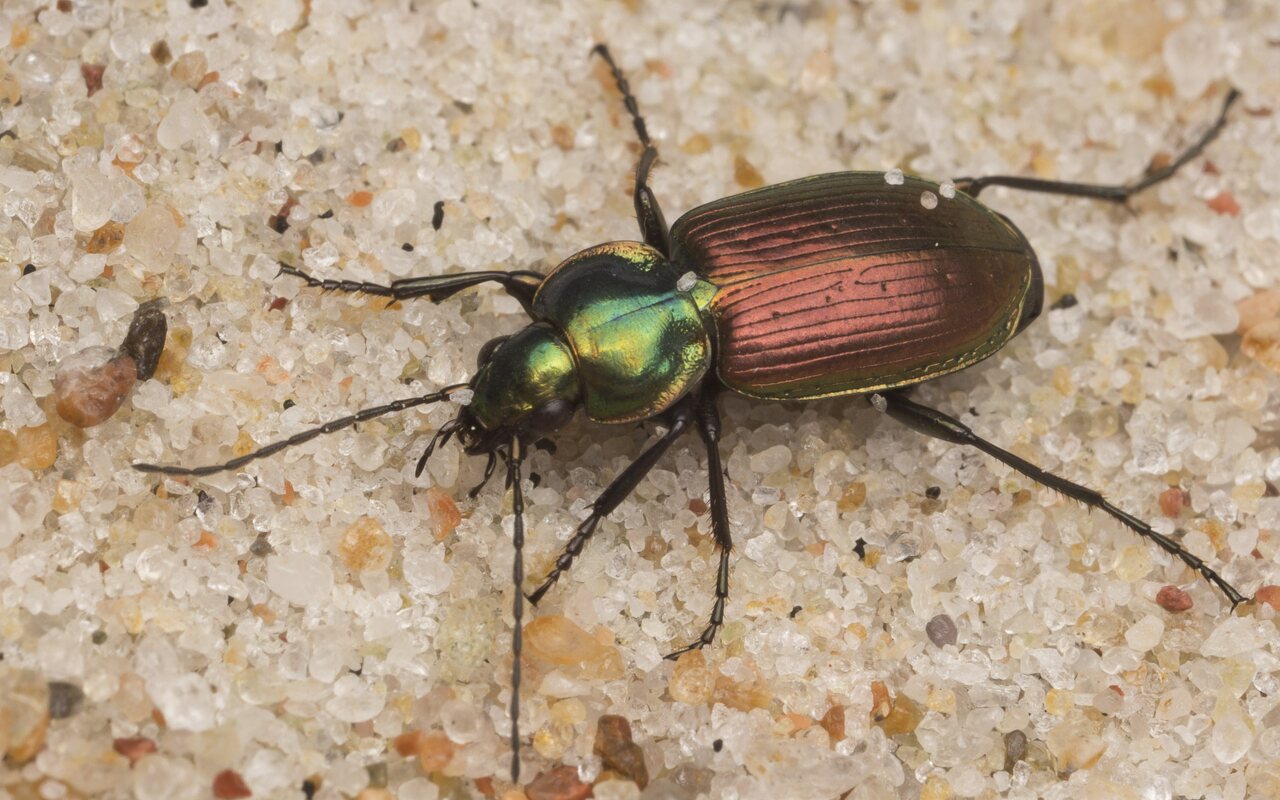
Agonum sexpunctatum · šešiataškis žvitražygis
- Sechspunktige Putzläufer, Sechspunkt-Glanzflachläufer
- välkekurekiitäjäinen
- šešiataškis žvitriažygis
- skoropędek sześciokropek
- juvellöpare
ukbeetles.co.uk/agonum-sexpunctatum
This very distinctive ground beetle is locally common throughout the Palaearctic region, extending east through Asia Minor and Siberia to northeast China, and north above the Arctic Circle in Fennoscandia. In much of central and northern Europe it is widespread and common or even abundant in a range of habitats on both seasonally dry, light sandy or calcareous soils and also in permanently damp or wet habitats on clay or silt. Here the typical habitat is open and sparsely vegetated lowland heaths on damp sandy soil, peat and sphagnum, generally near water and occasionally in damp and open woodland situations.
Adults are diurnal, they move fast as they hunt for springtails and small insects in bright sunshine but otherwise rest among tussocks or under logs or stones etc. in damp situations. They are active from March to August or September with peaks in numbers in April or May and again towards the end of summer. Adults overwinter among tussocks etc. and breed and disperse by flight in the spring, the predaceous larvae develop through the summer, passing through three instars, and new generation adults eclose in the autumn.
7.0-10.0 mm. the upper surface is bicoloured; the head and pronotum are bright metallic green or, rarely, blue and the elytra are metallic red with green margins. Very rarely all black specimens occur. All appendages are metallic black. Head smooth behind large and convex eyes; without a transverse impression, and with obsolete frontal furrows. The antennae are pubescent from the fourth segment and the mandibles are sharp and symmetrical, lacking notches or punctures on the outer edge. The apical segment of the maxillary palps is normal; not reduced as in Bembidion. There are two setiferous punctures beside each eye. Pronotum transverse and widest about the middle with all angles rounded, the lateral margin broad and roughened and the basal fovea with coarse and confluent punctation. The elytra are long and more or less parallel with strongly impressed and finely punctured striae, all interstices have strong isodiametric microsculpture and the third includes 4-8, usually 6-7, non-foveate punctures. The apices are rounded and the epipleura are not crossed. Legs long and slender; the pro-tibiae only gradually broadened towards the apex and with a well-developed antennal-cleaning notch. The tarsi are not furrowed on the dorsal surface and lack pubescence. The claws are smooth. The male pro-tarsi are distinctly dilated when compared to those of the female.
‥
0 comments
Add a comment
Comments